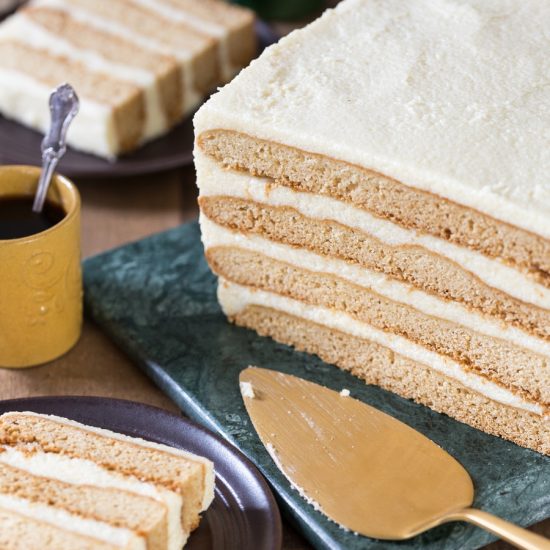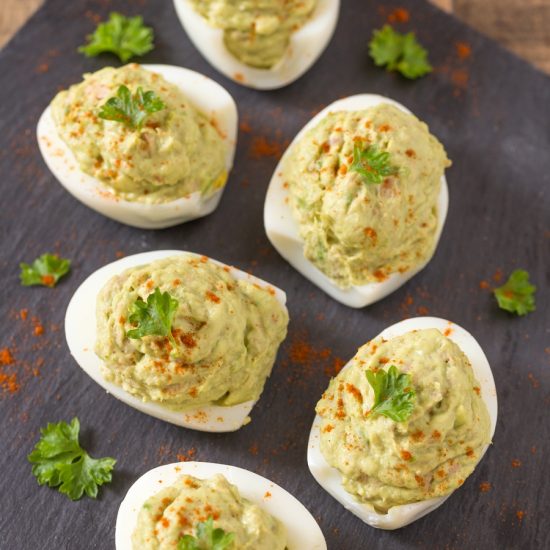Bird’s nest cupcakes are a perfect treat for your Easter table. Eggs are not just a decoration but the main flavour, too, as these egg nest cupcakes are made of eggy Portuguese sponge cake topped with egg custard and buttercream. The buttercream is piped to look like a nest and the nest is filled with custard and topped with chocolate eggs. A cute end to your Easter menu that also happens to be a very easy project.

It is that time of the year when Easter is still safely far away in time but close enough to start planning your Easter celebration meals. This year I will have my parents over and I am really excited to have them experience Sweden in a different season. They always visit in the summer and I honestly can’t blame them for that. Still, spring is quite a nice time to visit, too, although much colder than it is in Italy. I don’t care too much about the weather, anyway, as what I plan to do over those 10 days when they are visiting is to spend a lot of time in the kitchen.
If you, like me, are already searching for Easter cake ideas, here’s my suggestion for this year. Eggy sponge cake cupcakes topped with bird’s nests made with buttercream. Inside the nests a custard filling and little chocolate eggs. I’m really bringing out the egg flavour as much as I can in these cupcakes – as a matter of fact isn’t egg the best Easter cupcake flavour?
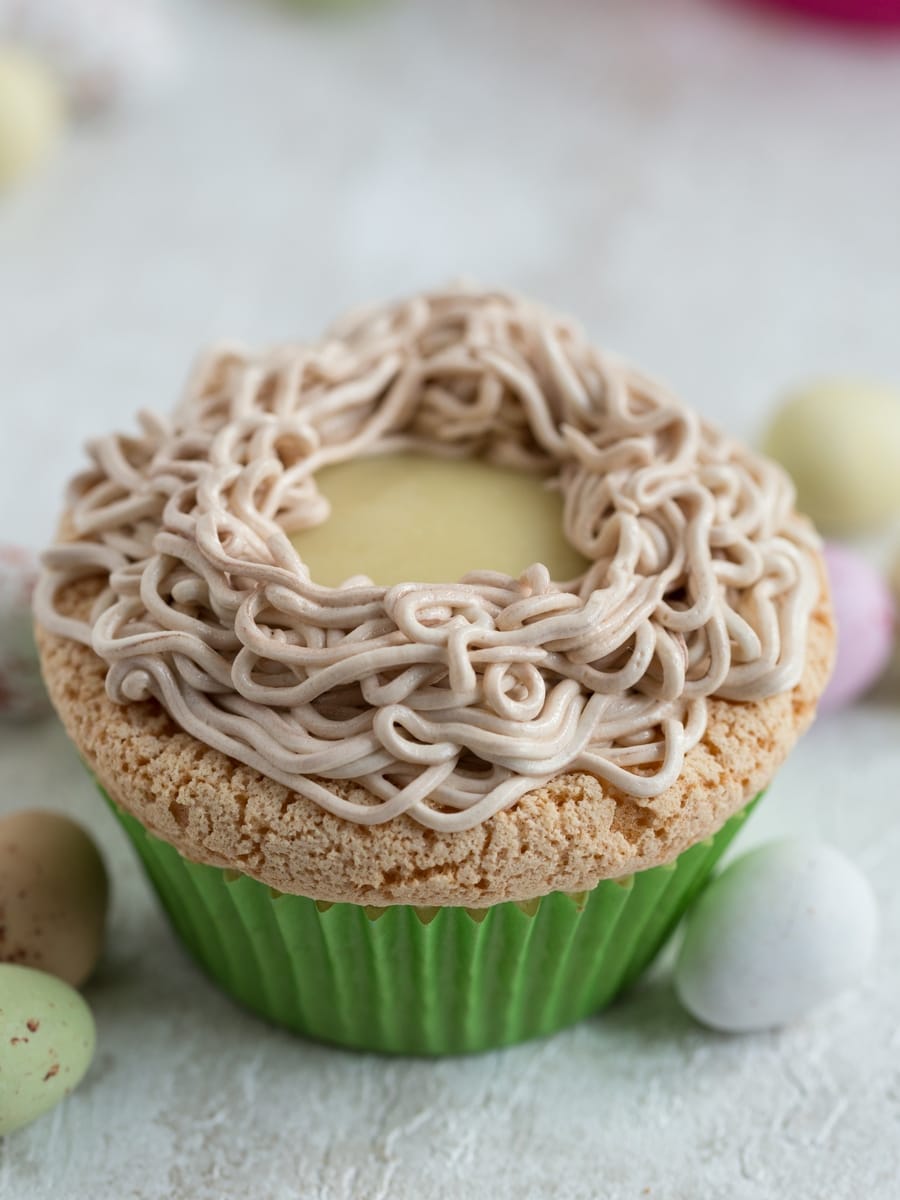
Portuguese sponge cake cupcakes
My Easter cupcakes are made on Portuguese sponge cake, also known as Pão de Ló. While there are numerous sponge cake recipes out there, what’s unique about the Portuguese recipe is that pão de ló is traditionally made with only 3 ingredients: eggs, flour and sugar. While I usually separate the egg whites from the yolks to make sponge cake, in this recipe the eggs are beaten whole for quite a long time – 15 to 20 minutes.
Here’s my easy sponge cake recipe.
The recipe I’m using in this post is an adaptation of the original pão de ló recipe that I used when I was a Home Economics teacher. That was when my subject colleague introduced me to this cake – we really aimed at making our lessons as international as possible as we worked in an international school. Since it’s an adaptation, this Portuguese sponge cake recipe does have a 4th ingredient: a tiny dash of baking powder. This was added to help just in case some students skipped some minutes of the mixing…

What’s notable about pão de ló is that it can be baked for as long as you please as there is no right or wrong about its texture. In this cupcake recipe I bake it all the way, taking out my cupcakes when completely firm. But pão de ló does not have to necessarily have this texture. You may as well leave it in the oven for a shorter time and you get a gooey cake, kladdkaka-style. This is better when making pão de ló in a cake pan, rather than as cupcakes. Since we’re adding a topping here, we want maximum firmness in the sponge cake so we’re baking our Portuguese sponge cake all the way.
Craving ooey gooey goodness? Try Kladdkaka, the Swedish sticky cake.
As I was saying before, we’re mixing the eggs whole and that takes some time. 15 minutes, to be exact. I usually set my timer and just mix until it rings. A timer does help, as the batter thickens and you may think it’s good enough and you may as well stop at some point. Nope. You mix your pão de ló for 15 minutes, not one less. Halfway through the mixing, sugar is added and that makes the batter even thicker. When ready to go in the oven, the batter texture is wonderfully thick and viscous.

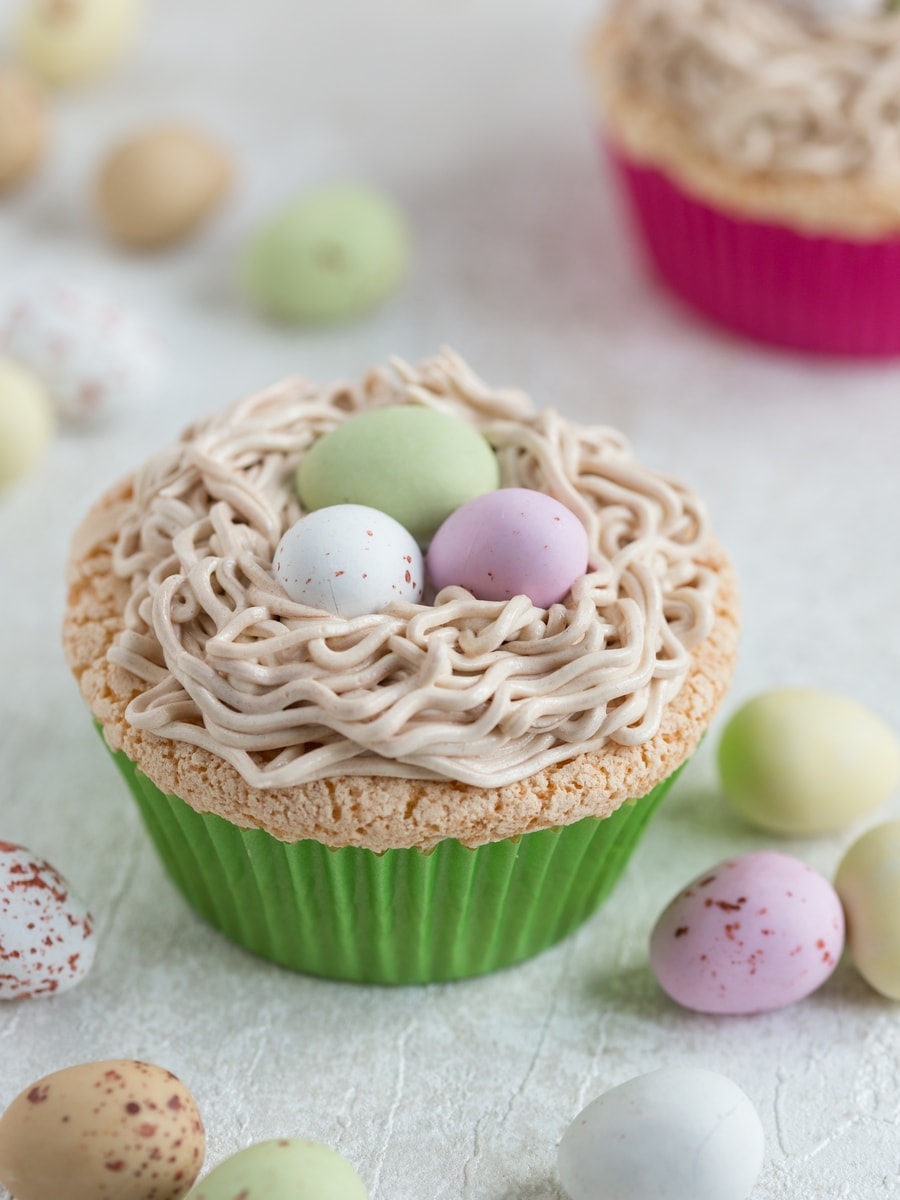

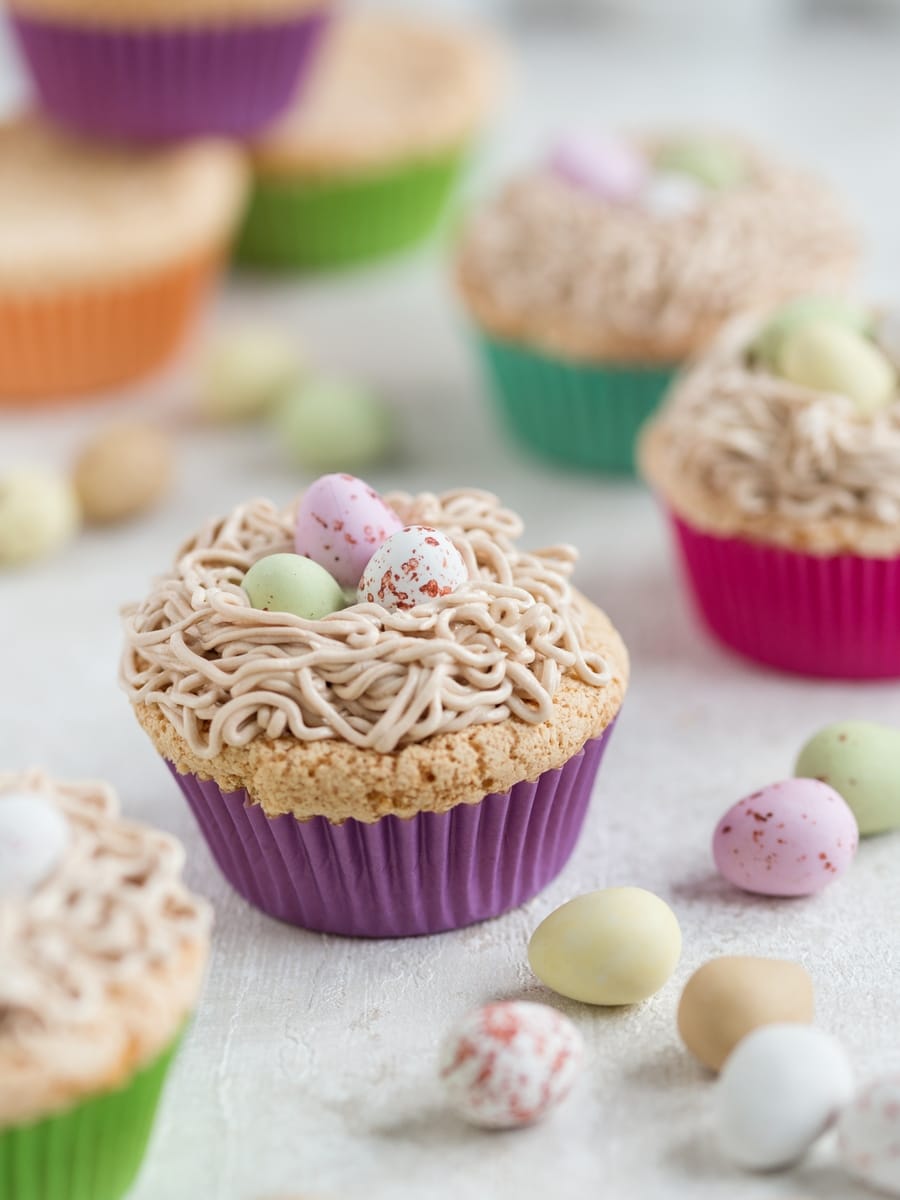
Egg custard cupcake filling
Pão de ló tends to naturally deflate when you take it out of the oven, so do expect your cupcakes to have a slight well in the centre. This just calls for filling! The cake itself has a very sweet and eggy flavour, but when baked all the way it can be quite dry. A dollop of egg custard is the perfect match for this cake. Keeping the egg flavour king, it also adds moisture and texture to the bite! Custard is made with just a handful of ingredients – namely egg yolks, milk, sugar and cornstarch. It’s a wonderful filling for many oher pastry creations.
Check out these custard tarts with fresh raspberries.
Custard does get firm, thanks to the added cornstarch, but it could be too runny to just spread on an edgeless surface like the top of a cupcake – as opposed to an edged tart crust. This is why it is best to pipe the buttercream nests first, then pipe some custard inside the nest. Buttercream is firmer, and will keep the custard filling in place. In order to make the bird’s nests I used a “spaghetti” tip with my piping bag. I coloured the buttercream with cocoa powder and I went easy with it as I wanted to keep a pastel beige tone. Add more cocoa powder for a darker brown colour.




Related reading: everything you ever wanted to know about pão de ló.

Bird's nest cupcakes
Ingredients
For the Portuguese sponge cake
- 300 g sugar
- 200 g flour
- 1/4 tsp baking powder
For the egg custard
- 160 ml milk
- 45 g sugar
- 2 yolks
- 15 g cornstarch
For the buttercream and decoration
- 100 g butter (room temperature)
- 50 g confectioner's sugar
- cocoa powder
- egg chocolates
Instructions
To make the sponge cake
- Crack the eggs into a bowl. Set a timer to 15 minutes and start beating the eggs at medium speed. Halfway through the mixing (about 7 minutes in) gradually add the sugar. Keep mixing until the timer rings - this recipe needs long mixing so go for a total of 15 minutes.
- When the timer rings stop the mixer. Combine the flour and the baking powder and add it to the egg mixture one tablespoon at a time, mixing at low speed now.
- Transfer the batter into a muffin tin lined with paper cups. The cake will grow, so do not overfill. Depending on the size of the pan the final amount of cupcakes might differ from 12. Bake in the preheated oven at 180°C for 20 minutes, or until a toothpick inserted in the centre comes out clean. As the cupcakes bake you can prepare the topping.
To make the custard
- Add 100 ml of milk to a saucepan and set it on medium heat.
- In a separate container combine the remaining ingredients: egg yolk, sugar, cornstarch and 60 ml of milk. Blead with a hand blender to combine.
- When the milk has warmed up, pour in the egg mixture and bring to a boil stirring continuously. The custard will thicken quite quickly. Remove from heat when it boils. Cool to room temperature then add to a piping bag.
To make the buttercream
- Combine the butter, cut in chunks, and sugar and mix at medium speed with a hand mixer for about 5 minutes, until creamy and fluffy. Stir in some cocoa powder to colour the buttercream brown. Transfer to a piping bag with a "spaghetti" tip.
Decoration of the cupcakes
- Make sure that the cupcakes have cooled to room temperature. Pipe a circle of buttercream around the edges of each cupcake to create the outer edge of the nest. Pipe the custard inside the buttercream nest. Pipe a smaller circle of buttercream to make the top part of the nest. Place three chocolate eggs inside each nest, setting them in the custard.
- Store refrigerated. Best served at room temperature.


